My wife and I loved everything about the Magnolia duplex we had just purchased, except for one glaring exception. At some point, someone decided to put a giant window in the shower.
The window faced a nearby neighbor’s house and it was 5 feet from a sidewalk, giving strangers a direct line of sight to anyone using the bathroom. The window also had a ledge that collected shower water, and over the years, water had seeped into the surrounding wall. The whole thing was so rotten, you could punch through it like you were a superhero.
As far as bathroom design ideas go, it was one of the most head-scratching decisions ever made. In our case, it lead to rebuilding the wall. The window became small translucent blocks that were flush to the wall so they shed water. And a new tile surround protected the walls from further water intrusion.
When homeowners are considering a remodel, bathrooms are often at the top of their list, due to structural issues like mine, outdated design or poor functionality.
Bathrooms have a unique place in the home. They are usually one of the smallest rooms in the house, yet they’re packed with amenities. They are where you spend large amounts of time doing very personal things, so the space needs to be inviting, warm, functional and uniquely durable.
Just because a bathroom is small doesn’t mean the decisions are easy or affordable. In fact, the choices often become more difficult due to the space constraints.
And since bathrooms are full of potential amenities, they boast one of the higher cost-per-square-foot ratios in the home.
If you’re thinking about a bathroom remodel, here are some of the major considerations to guide your decisions and your budget.
Cost
“How much will it cost?” is usually the first question. But the answer is not so straightforward. The average bath remodel runs around $12,000, but how much you’re willing to spend will determine how big and nice your project will be.
Simple improvements, such as new paint and swapping out a few components, could cost as little as $1,500–$5,000, while a full-scale renovation using high-end elements will be more like $25,000. I’ve also seen people spend as much as $100,000 on a single bathroom.
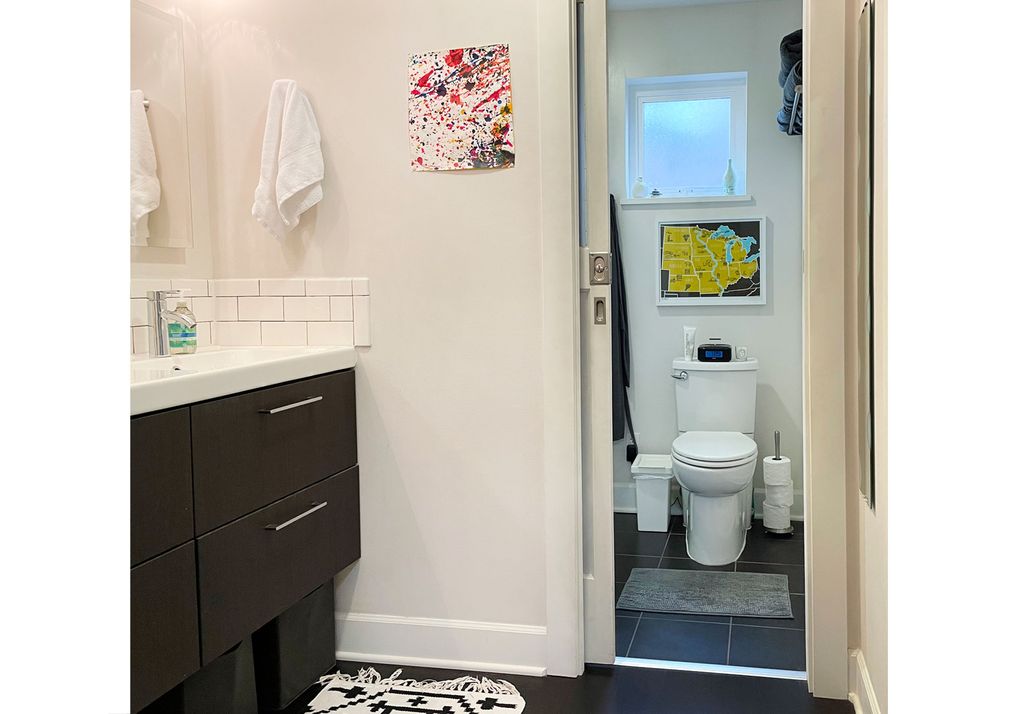
Planning your space
Space in a bathroom is usually at a premium, so detailed planning on the front end is critical. When looking at examples of bathrooms you like, it’s easy to get distracted by finishing details like paint colors or faucet styles. But to get a well-designed bathroom, really pay attention to the big picture items — things like overall size, spacing and how you typically use it.
The choices you ultimately make should match the style of your home, and it’s important not to overdo it. If your bathroom is amazing but the rest of the house is falling apart, it will have been wasted money when it comes time to sell.
When sketching out your space, make note of where the plumbing is located. Changing this can turn into major surgery and drive up costs, so leave drains and water sources in place if you can. That said, if the previous owner made a horrible design decision (like placing the toilet in front of the door, for example) then it’s worth the investment to hire a pro to change the layout.
For electrical, think through where you want your outlets. Where will you charge your electric toothbrush or plug in your hair dryer? If you share a space with someone, will you need to use the outlets at the same time?
If you’re older or designing your forever home, think about how the room will function as you age. This may lead you to allow extra space for a wheelchair or to install a no-threshold shower.
Nobody likes to brush their teeth while another person is using the toilet. So, if possible, put the toilet in its own room with a door and fan. It can be a marriage saver.
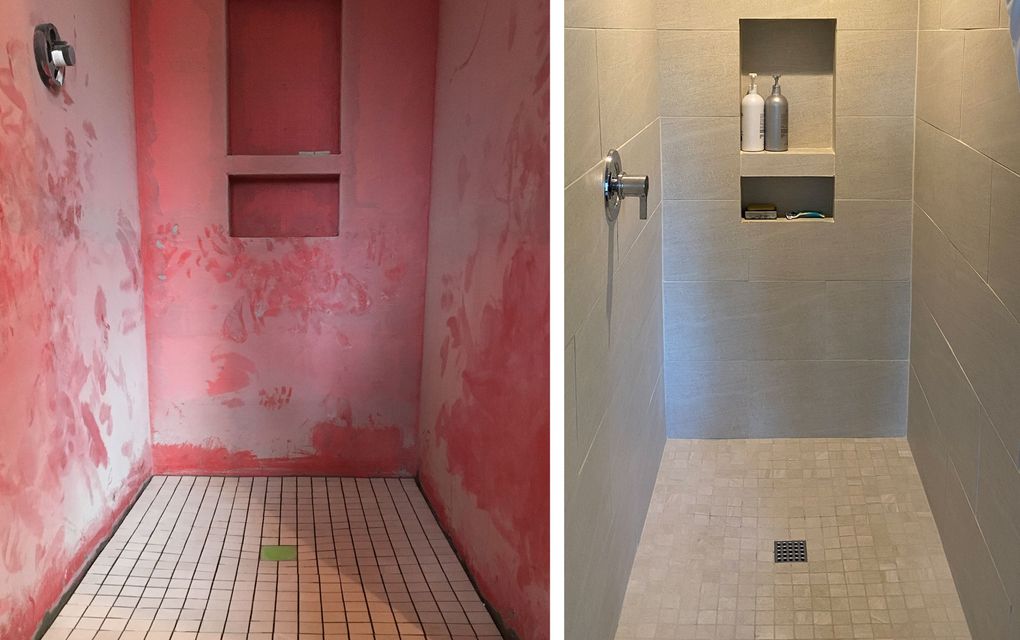
Tile
By their nature, bathrooms are subjected to large amounts of moisture. This is terrible for wood floors or trim, which will warp and discolor if exposed to large amounts of water. Drywall, too, will soak up water if it’s overexposed.
That’s the reason that tile (in the form of porcelain, ceramic or stone) is so popular in bathrooms. Tile is one of the few construction elements at the intersection of attractiveness, durability and cost-effectiveness.
While the material itself can be very affordable, the tile installation will usually be a big line item. If you want to take on the tiling job yourself, you can save a bundle. Be warned that it’s dirty, unpleasant and requires great attention to detail. Of all the construction projects I do, tiling is one of my least favorite. But it can also be rewarding to see an entire surface covered in a single day.
When I built my new home recently outside of Leavenworth, I installed four bathrooms and laid down tile floors and shower surrounds in all of them — primarily because I didn’t want to worry about future water problems.
But even with tile, you have to make good decisions to have peace of mind.
During my build, I was surprised to learn that some grout is porous, so water will eventually seep through. Using an epoxy-based grout instead of sanded grout will keep out water, although it’s harder to install and more expensive.
You can also add a waterproof coating like RedGard to your backer board before the tile is installed. It’s a quick and easy step that will stop moisture if it passes through your grout. This is especially important when tiling a shower pan.
For bathroom flooring, make sure your tile is slip-resistant. Textured tile will help this, as will using smaller tile with more grout lines to add traction. Small tile is easier to slope than large tile, which is essential in shower pans.
While color is highly personal, in my experience white grout looks pristine for about a week and is then maddening to clean for the rest of your life. So select a darker grout if possible.
And the tile you choose should be timeless. Replacing a trendy faucet or mirror is easy, but replacing tile is a major project. So choose something that will age well.
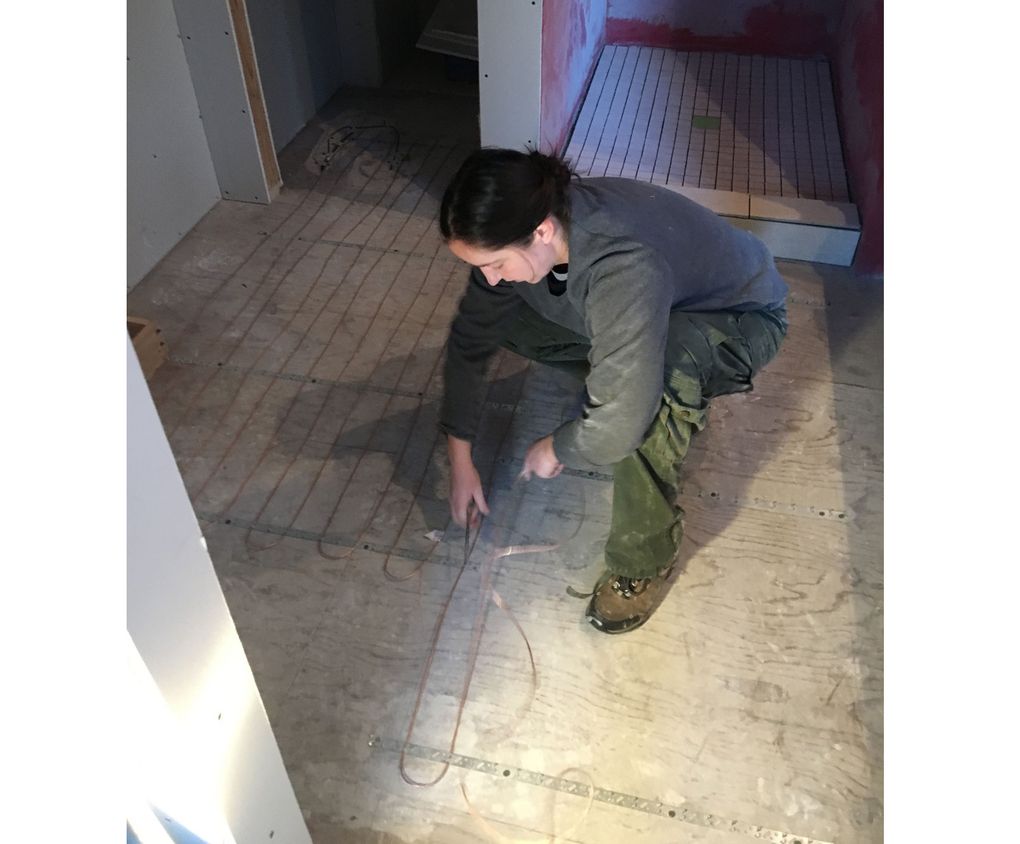
Heated flooring
A major drawback to tile flooring is that it can feel cold on the feet. If you’re already planning a new tile floor, adding heat is a fairly easy upgrade. This may sound daunting and expensive, but my wife and I put a heated floor in our master bath as a DIY project for under $300 in materials, and it was one of the best decisions we made in our entire house.
Heated floors use linked mats or heated cable beneath a layer of mortar. An electrician will need to connect the flooring to a controller which can be programed to run when you choose.
Just make sure you cover the whole floor. If you skimp, you’ll have uncomfortable cold zones.
Soaker tubs
For some, having a jumbo bathtub is the height of luxury. These come in the form of freestanding, claw-foot-style tubs or embedded soaker tubs.
But there are three things to consider when opting for a large tub. First, they are very big and heavy, so figure out if you can even get one into your space.
Second, know yourself and whether you’re truly a tub person. Some people never take baths, making a large tub a waste of money and space.
An oft-ignored third consideration is the water heater. A jumbo tub may need a bigger water heater, or you’ll run out of hot water before it’s filled.
Options for small spaces
There are a range of products that can make a bathroom feel bigger. A pedestal sink, as opposed to a cabinet, buys you more visual space. A big mirror and glass shower doors trick you into feeling like the space is larger.
Invest in good lighting to make the room feel bright. Couple that with lighter colors to make the room feel larger.
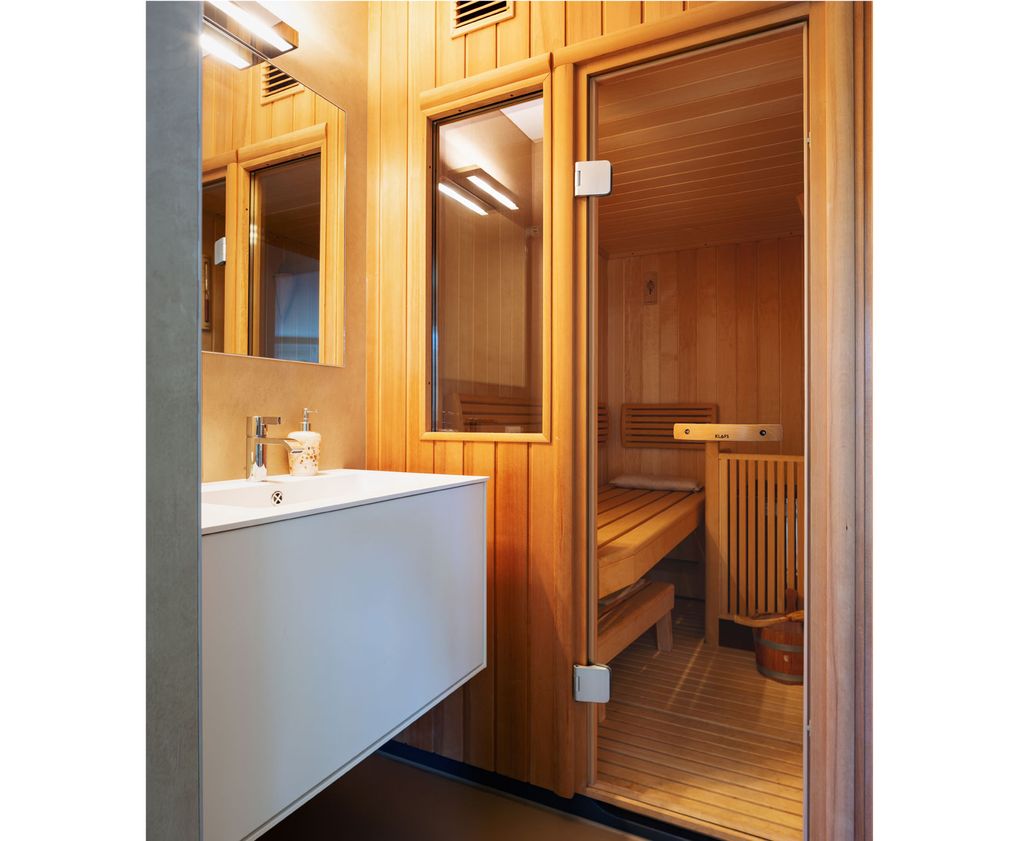
Upgrades for larger budgets
If money is no object, there are some really fun upgrades to consider. Showers can have multiple heads installed. Double sinks will end a common source of frustration. Low-threshold showers are a cool, modern touch. Private steam or sauna rooms can make your bathroom feel like a spa. And you can spend thousands on a fancy Japanese toilet.
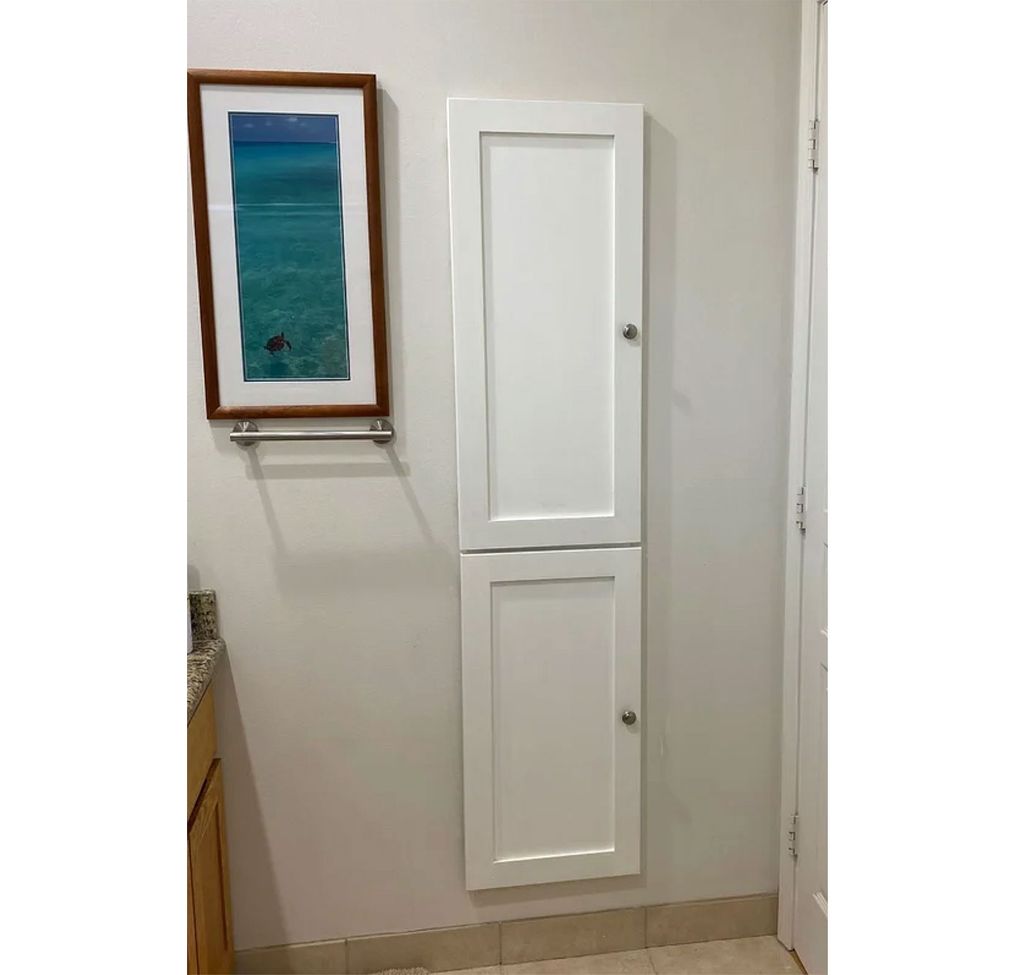
Storage
While not one of the sexiest items on the list, plentiful storage will declutter the room and make the space work more efficiently. Expand the idea of the recessed medicine cabinet to other parts of the bathroom, with storage embedded between the wall studs elsewhere in the room.
If you’re already tiling a shower, add a built-in alcove to store your shampoo and other toiletries.
Ventilation
Good ventilation is another forgettable item that’s extremely important. Without it, moisture won’t leave the room, and that leads to rot and mold.
Some older bathrooms rely on a window for ventilation — those rooms will almost always have moisture problems, so it’s definitely worth it to install an electric fan.
Bathroom fans are rated by their power and noise. Don’t just get the minimum power needed for your space — this is a place where more is better. When in doubt, opt for a more powerful model than you need. You can also install more than one fan.
Writer and general contractor Jeff Layton has been a builder and landlord in Seattle for more than 15 years. He recently installed four new bathrooms in his “forever home” near Leavenworth.
